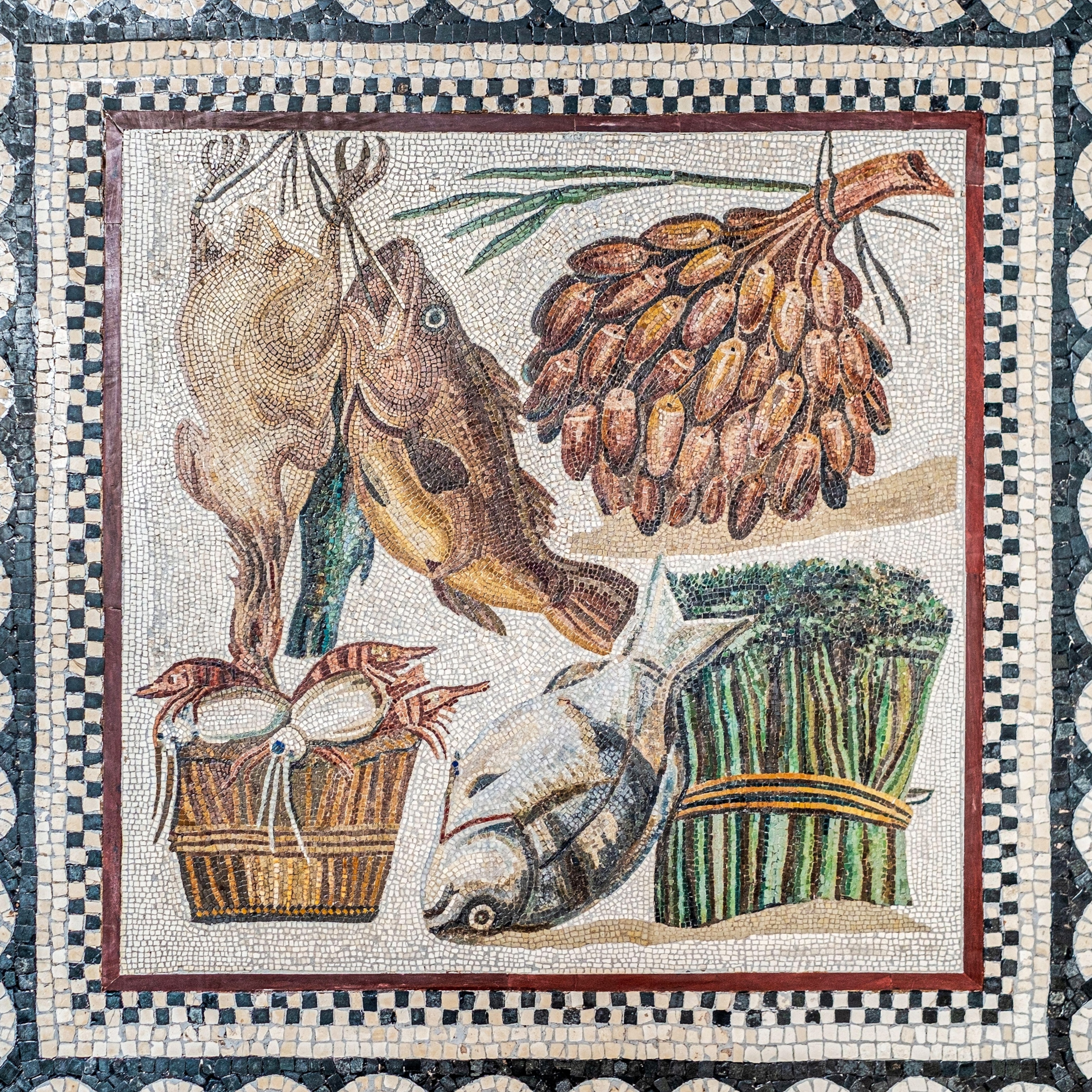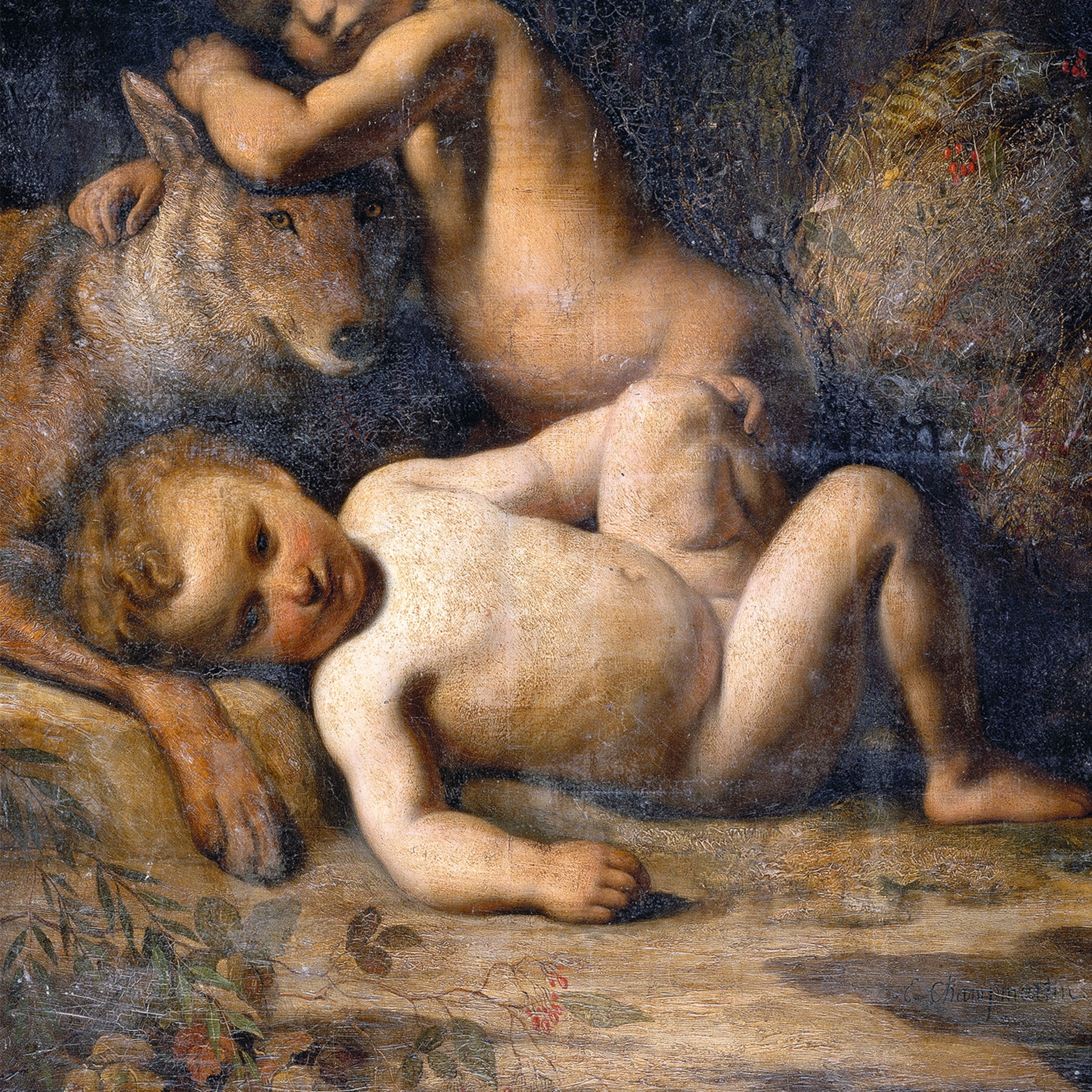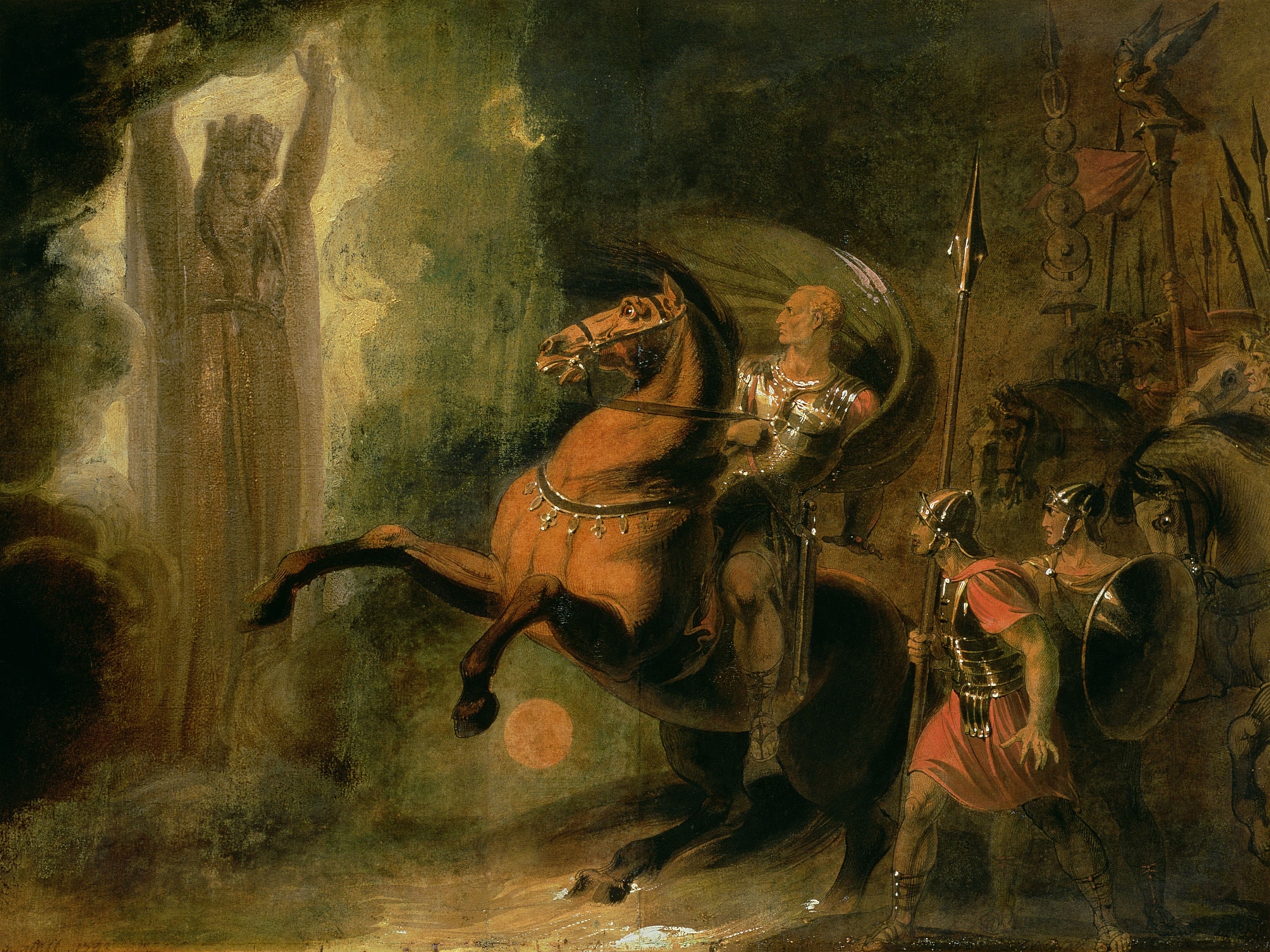The monstrous Minotaur riveted ancient Greece and Rome
Prisoner of the Labyrinth, the half man, half bull was a favorite legend for centuries, revealing the intertwined cultures of the Mediterranean world.

Deep inside the Labyrinth on the island of Crete lived a Minotaur, a monster half man, half bull. Imprisoned there by his stepfather, King Minos of Crete, he dined on human flesh supplied by the city of Athens. Every nine years, Minos commanded Athens to send 14 youths in tribute. The horrible rite continued until the Athenian hero Theseus came to Crete, entered the Labyrinth, and slew the beast.
The story of the Minotaur has thrilled people for thousands of years and inspired myriad works of art: pottery, poetry, plays, the art of Picasso, operas, movies, and video games. Although the myth can be enjoyed as a satisfying tale, archaeologists now know that its fabulous qualities have roots deep in real events in the Bronze Age.
The bull-headed man in Minos’s maze embodies several traits found in the culture of Crete and ancient Minoan civilization. Bulls and maze motifs are found throughout Minoan culture, which dominated the Mediterranean from about 3000 B.C. to about 1100 B.C. In confronting and overcoming the bull—a symbol of Crete—Theseus, the legendary founder of Athens, reflects the flowering of Aegean civilizations beginning in the middle of the second millennium B.C., as mainland Greece replaced Crete as the dominant power. (Learn more about the Minoan civilization and its collapse.)

A labyrinthine myth
Classical authors have told and retold the tale of the Minotaur. The tellings vary, but there are common traits throughout each one. Bulls, in various forms, play crucial roles in the story. In the most common version, Zeus, king of the gods, falls in love with Europa, a Phoenician princess. He turns himself into a gentle, white bull, charms her, and carries her off to the island of Crete. She later gives birth to his son Minos, who grows up to become king of Crete.
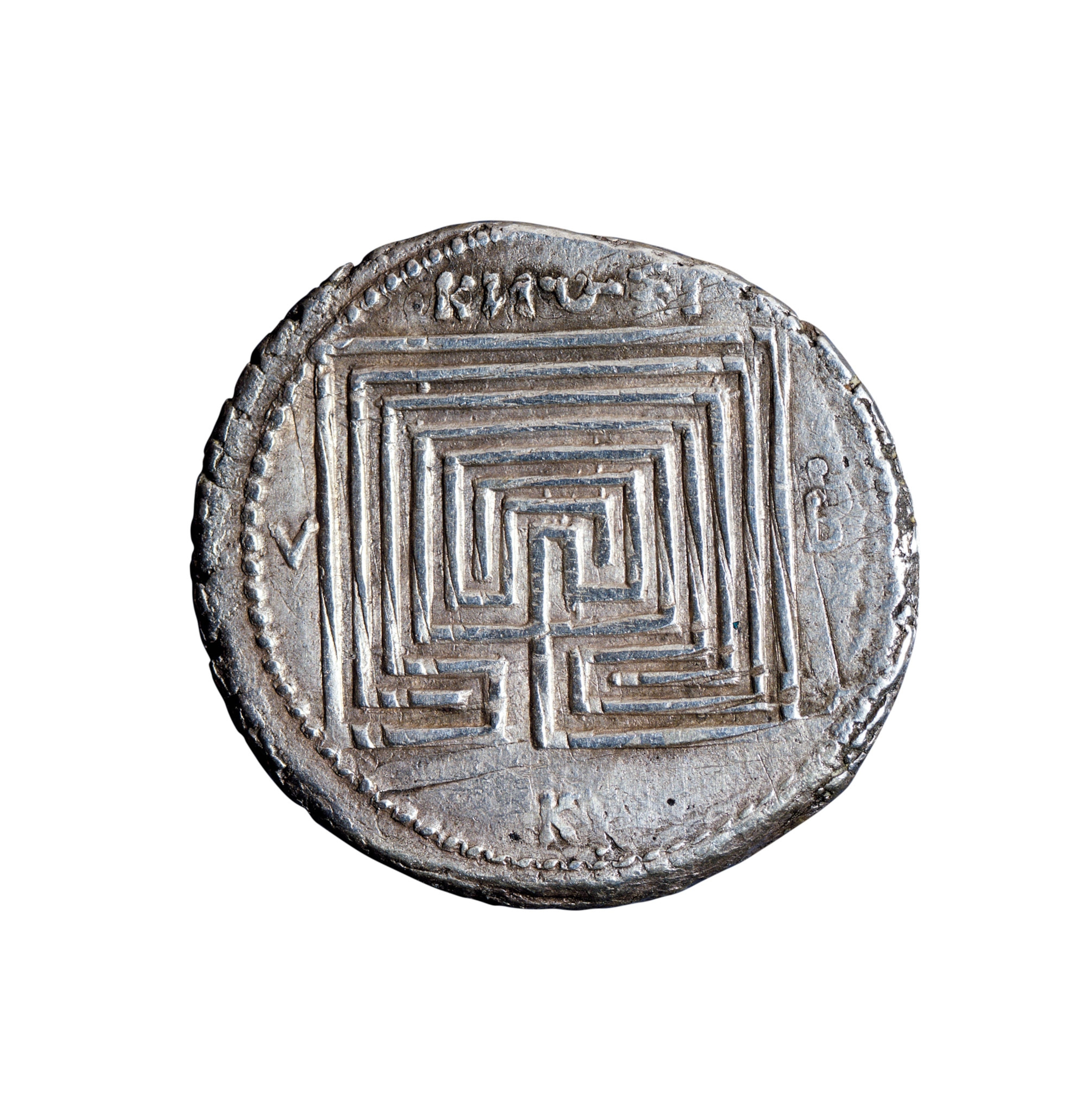
To seal his reign’s legitimacy, Minos asks the sea god Poseidon to send him a bull that he will sacrifice in the god’s honor. Poseidon duly sends a magnificent white bull from the surf. But at the moment of sacrifice, Minos, fascinated by the beauty of the animal, spares his life.
Furious at this disrespect, the sea god makes Minos’s wife, Pasiphae, go mad with desire for the bull. Pasiphae asks the Athenian inventor Daedalus to design a disguise for her so she can get close to the beast. He creates a life-size hollow cow, and Pasiphae climbs inside it to entertain the bull. The result of their union is a bull-human hybrid child she names Asterion. Better known as the Minotaur, he is imprisoned by King Minos in an intricate Labyrinth designed by Daedalus.
Meanwhile, in Athens, a young prince, Theseus is coming of age. Some years before, the Athenians killed one of King Minos’s sons, for which the Cretan king exacted a terrible price: Every nine years, Athens should send to Crete 14 young Athenians (seven maidens and seven youths) for the Minotaur to devour. Theseus volunteers as one of the sacrificial victims and vows to slay the Minotaur.
When the Athenians arrive at the island of Crete, Ariadne, daughter of King Minos, falls in love with Theseus. Before he enters the Labyrinth, she gives him a ball of thread (the idea of Daedalus the architect) so that he will be able to find his way back out. Ariadne stays outside, holding one end of the thread, while Theseus walks through the maze, the thread unraveling as he walks. When he finds the Minotaur, he fights and kills him, freeing the other young Athenians. Everyone follows the thread he left behind to safety. Finally free, Theseus sets sail for Athens, taking Princess Ariadne with him. But Theseus abandons Ariadne on the island of Naxos before continuing on to Athens with her sister, Phaedra, whom he marries.
Words and images
This story, as it has been passed down over the centuries, evolved slowly, transforming again and again over the centuries. The legend of the Minotaur circulated in the Greek world from ancient times, but he appears more often in early visual works of art rather than literary ones.
Although there are clear references to Theseus, Minos, and Ariadne in The Iliad (written circa eighth century B.C.), Homer never names the Minotaur. A fragment from the poet Sappho of Lesbos reveals that the story of human blood tribute that Minos demanded of the Athenians was already being told at the beginning of the sixth century B.C. The fifth-century B.C. Greek historian Herodotus mentions Minos, but not his monstrous stepson. Stories of Theseus, hero of Athens, were popular, but writers tended to focus on Theseus’s other accomplishments, such as his descent into the underworld or his adventures with the Amazons. The Minotaur is largely absent from the popular Theseus stories in this period. (Find out how children were educated in ancient Greece.)
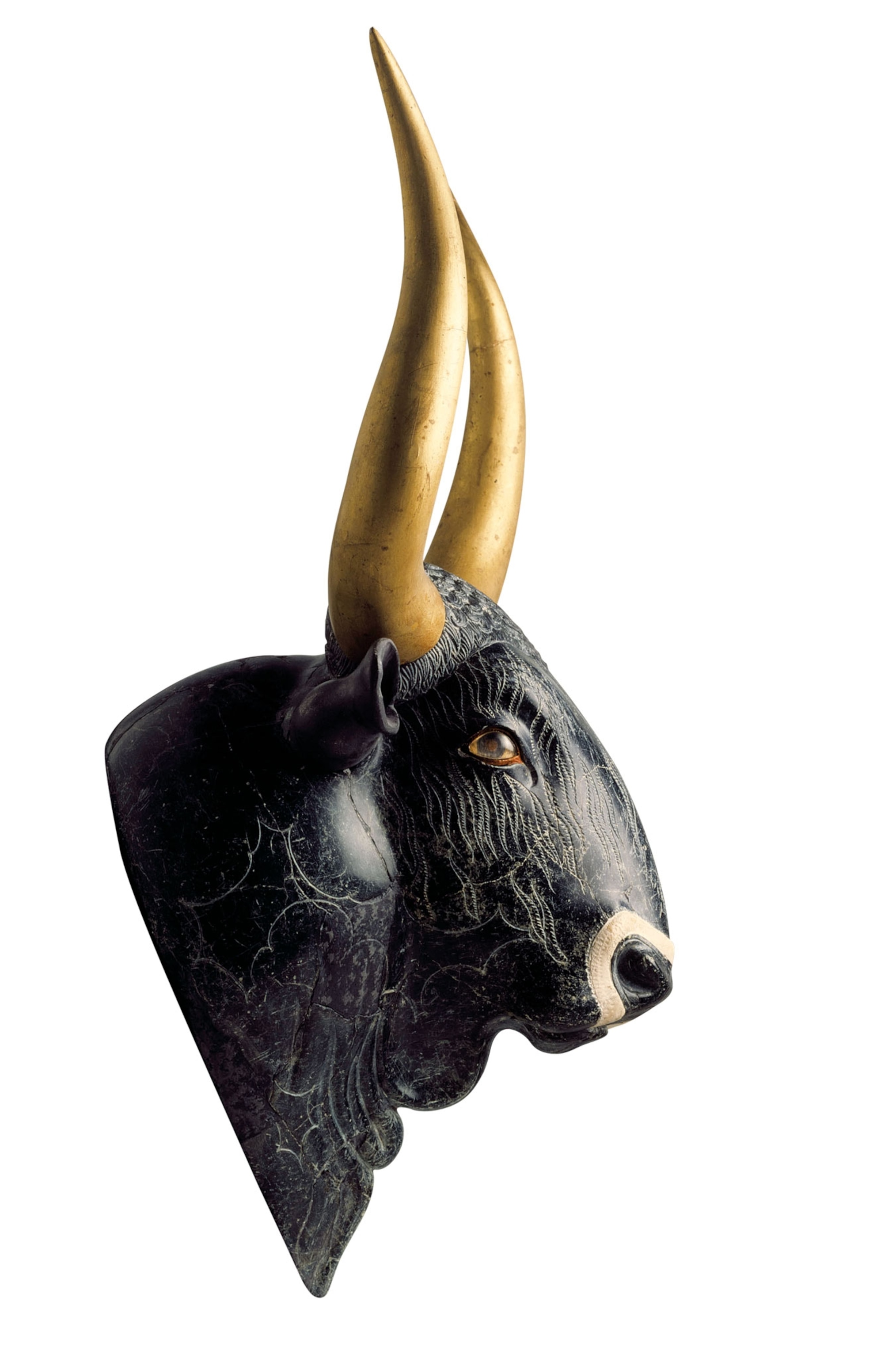

Showing up on pottery, metalwork, and other decorative art, the Minotaur was, however, a favorite subject for visual artists at this time. An amphora from Tinos, in the Cyclades Islands, dated to around 670-660 B.C., shows the oldest known depiction of the confrontation between the Minotaur and Theseus. Found at Olympia, bronze shield straps, which may date from as early as the mid-seventh century B.C., also show the two fighting.
Another amphora from the Cyclades Islands, dated to the mid-seventh century B.C., even inverts the popular imagining of the Minotaur and instead shows him with a bull’s body and a human head. It depicts another detail that would become central to the story: one of the youths who accompany Theseus holds a ball of twine, the object that allowed the Athenian hero to escape from the Labyrinth after killing the beast. Almost every depiction of the monster shows him in combat with Theseus.

References to the Minotaur begin to appear later in Greek literature such as Euripides’ fifth-century B.C. play The Cretans. Most of the play has been lost, but fragments survive: The story reveals Pasiphae’s experience and her conflict with Minos over the birth of the Minotaur.
Another account of Theseus and the Minotaur comes from the Bibliotheca, a massive compilation of Hellenic myths and stories. For centuries, scholars dated the work to the second- century B.C., but further research puts its creation much later, in the first or second century A.D. Credited to an unknown author whom scholars call Pseudo-Apollodorus, the Bibliotheca covers creation myths, the ascension of the gods, and mortal heroes and heroines. The entire history of Minos, Pasiphae, Daedalus, Theseus, and the Minotaur is covered in great detail in this work, no doubt providing a strong basis for accounts that followed.
Many of the detailed stories of the Minotaur are found in Roman sources. One of the most detailed is from Plutarch’s second-century A.D. work Parallel Lives, which devotes an entire chapter to Theseus. He compared Theseus, founder of Athens, to Romulus, founder of Rome. Metamorphoses, an epic poem written by Ovid in A.D. 8, is another popular telling of the Minotaur legend, featuring great detail about the conquests of Minos throughout Greece before the Labyrinth is built.
The Boy Who Flew
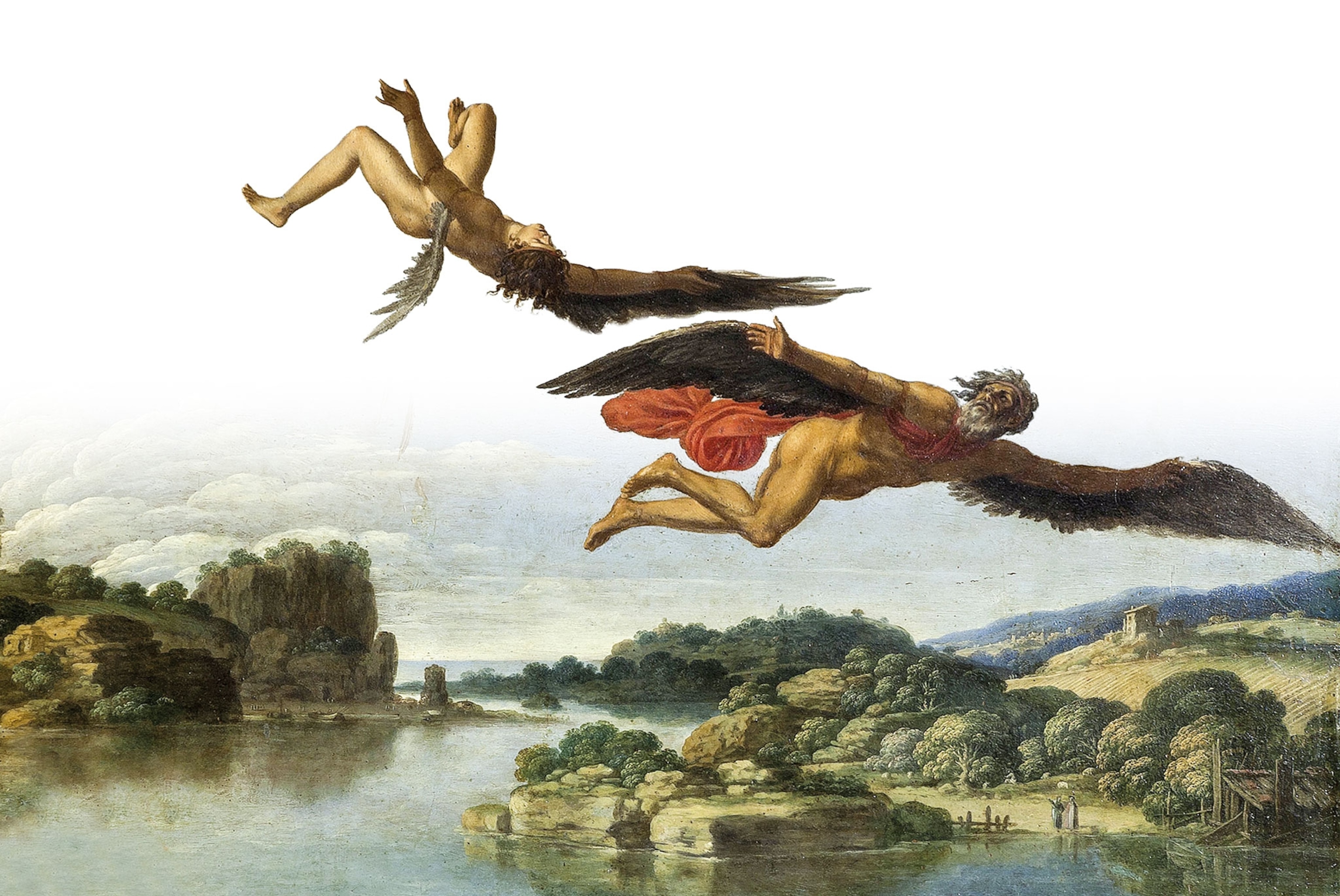
Banished from Athens for killing a kinsman, the inventor Daedalus plays a key role in the Minotaur myth. He is the one who creates the cow disguise for Queen Pasiphae that results in the birth of the Minotaur, and he designs the Labyrinth to imprison the beast. After Theseus kills the Minotaur and escapes the maze, King Minos is furious. He locks Daedalus and his son Icarus in the Labyrinth, but Pasiphae secretly releases them. To escape from Crete, Daedalus makes wings from feathers and wax so he and his son can fly to Sicily. On their way, Icarus flies too close to the sun, and the wax melts. He plunges to the sea and drowns. The island Icaria, named for him, is where tradition says his body was washed ashore.
Minoan civilization
For Greeks of the fifth and fourth centuries B.C., Theseus was celebrated as a national hero of Athens. The place the Minotaur had in their imagination requires a deeper understanding of Crete’s distant past. Crete started to become a trading power in the Mediterranean around 3000 B.C. By the middle of the second millennium B.C., it was at the center of an extensive trade network with Egypt, Syria, the Aegean islands, and mainland Greece.
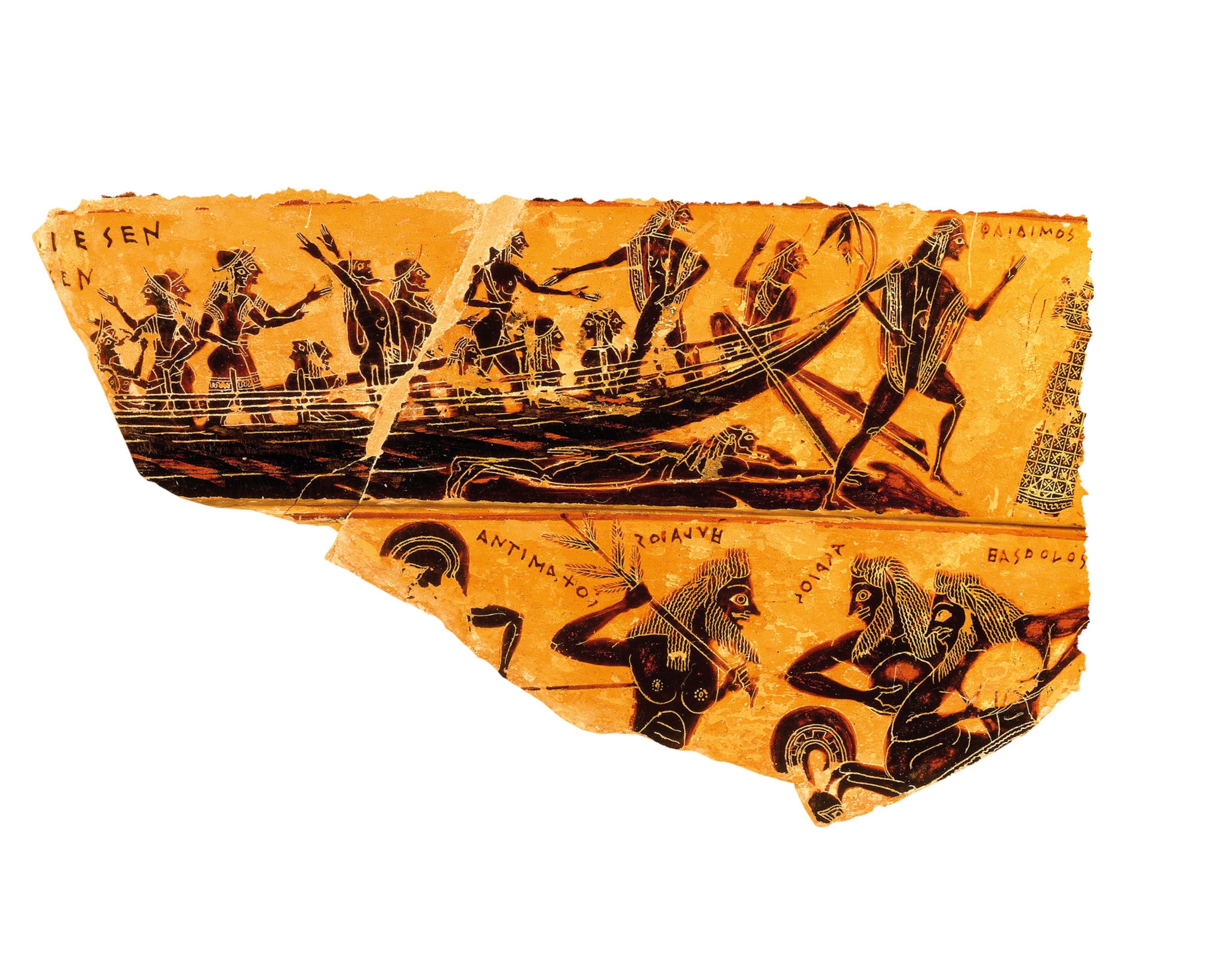
Minoans established settlements throughout the Mediterranean world along these trade routes, and they brought their culture with them. Crete’s language, arts, and textiles were widely dispersed and welcomed. Settlements on Greek islands reveal that even urban planning was exported: Settlements were often laid out in a Minoan style. A Greek culture based at the citadel of Mycenae, some 75 miles west of Athens, enthusiastically absorbed and copied not just the fashionable Cretan ceramics but also the Cretan language.
After 1450 B.C. Crete began to decline as the Mycenaean Greeks started to dominate the eastern Mediterranean. Their written language, known by scholars as Linear B, was adapted from the language of the Minoans and is now known to be an early form of Greek.
King Minos's legacy
From 1900 to 1903, British archaeologist Arthur Evans, working on a hunch that Mycenaean Greece was heavily influenced by Crete, excavated on the island and found a royal palace at the site of Knossos and many artifacts featuring bulls. He named the ancient Cretan culture he unearthed there “Minoan” in honor of the great mythological King Minos, son of Zeus and stepfather to the Minotaur.
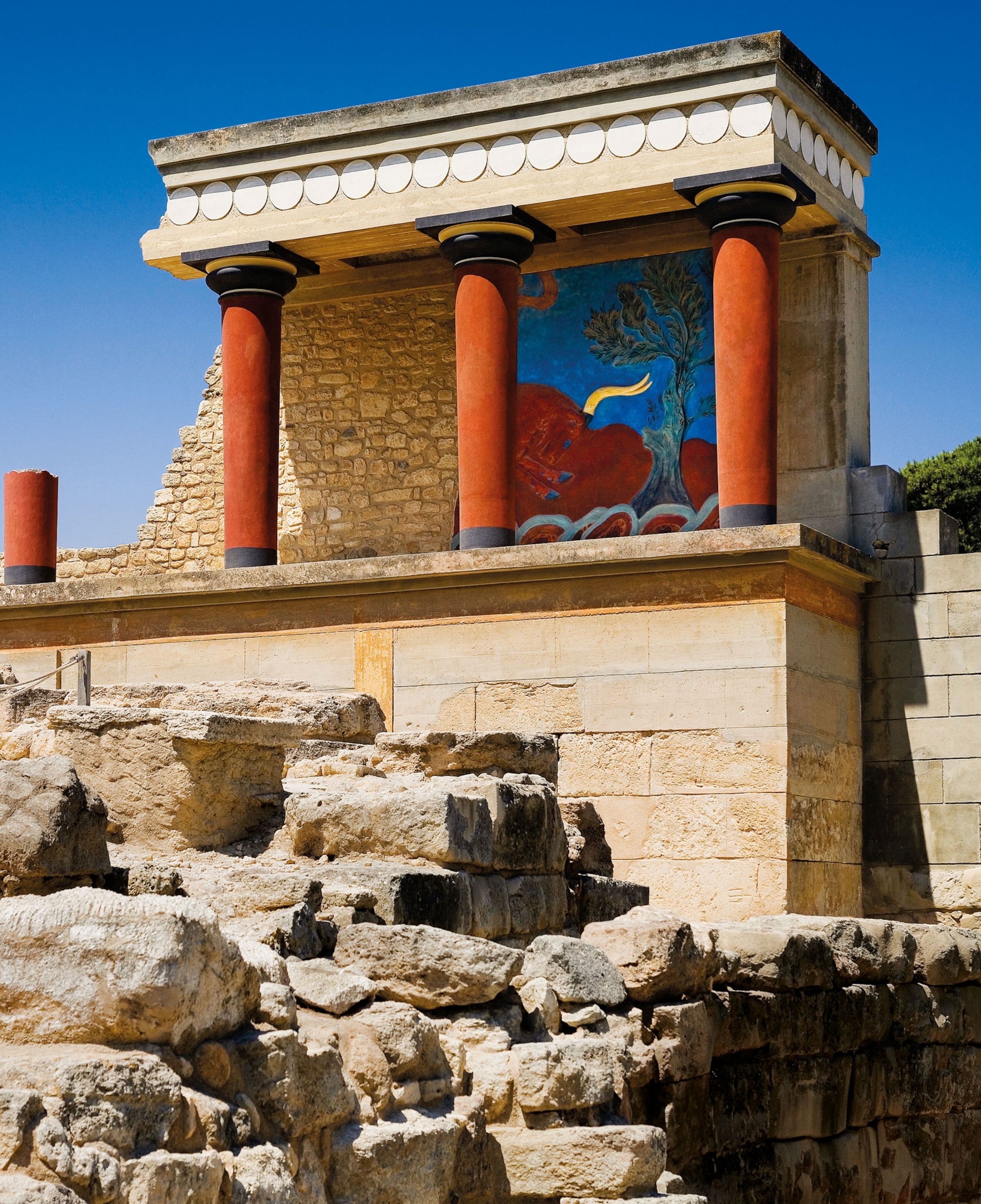
The name Minos does not appear to be a mythical invention. When tablets found at Knossos were deciphered, scholars were excited to find the word “Minos.” Historians believe Minos was not the name of an individual king, but the title of kings in general, who would have served as consorts to the more powerful queen.
Historians now consider that Minoan power and culture reached its height around 1600 B.C. Decorated with frescoes funded by the trade in luxury goods, magnificent structures from this time, dedicated to religious and administrative activities, were found by Evans in his excavation of Knossos.
The buildings were covered with vibrantly colored art that reflected the culture’s reverence for bulls: Frescoes and figurines, dating from 1700 to 1400 B.C., show figures jumping over the bulls in a ritual called tauro-kathapsia. This rite may have been practiced at sacred ceremonies and sacrifices to the gods. A symbol of fertility in many religions, bulls were ritually killed using the double-edged ax or labrys, an emblem of royal power.
The Minotaur’s prison, the Labyrinth, also has deep roots in Minoan material culture, but scholars have different theories as to its origin. As no archaeological remains of a maze have ever been found on Crete, some researchers have suggested that the term could be synonymous with the palace itself. The Labyrinth could come from this vast complex of rooms. A proposed etymology for the name comes from the word for the sacred ax, labrys, and its use in animal sacrifice. (Solving labryinths has been explored by science.)
The Sad Fate of Ariadne
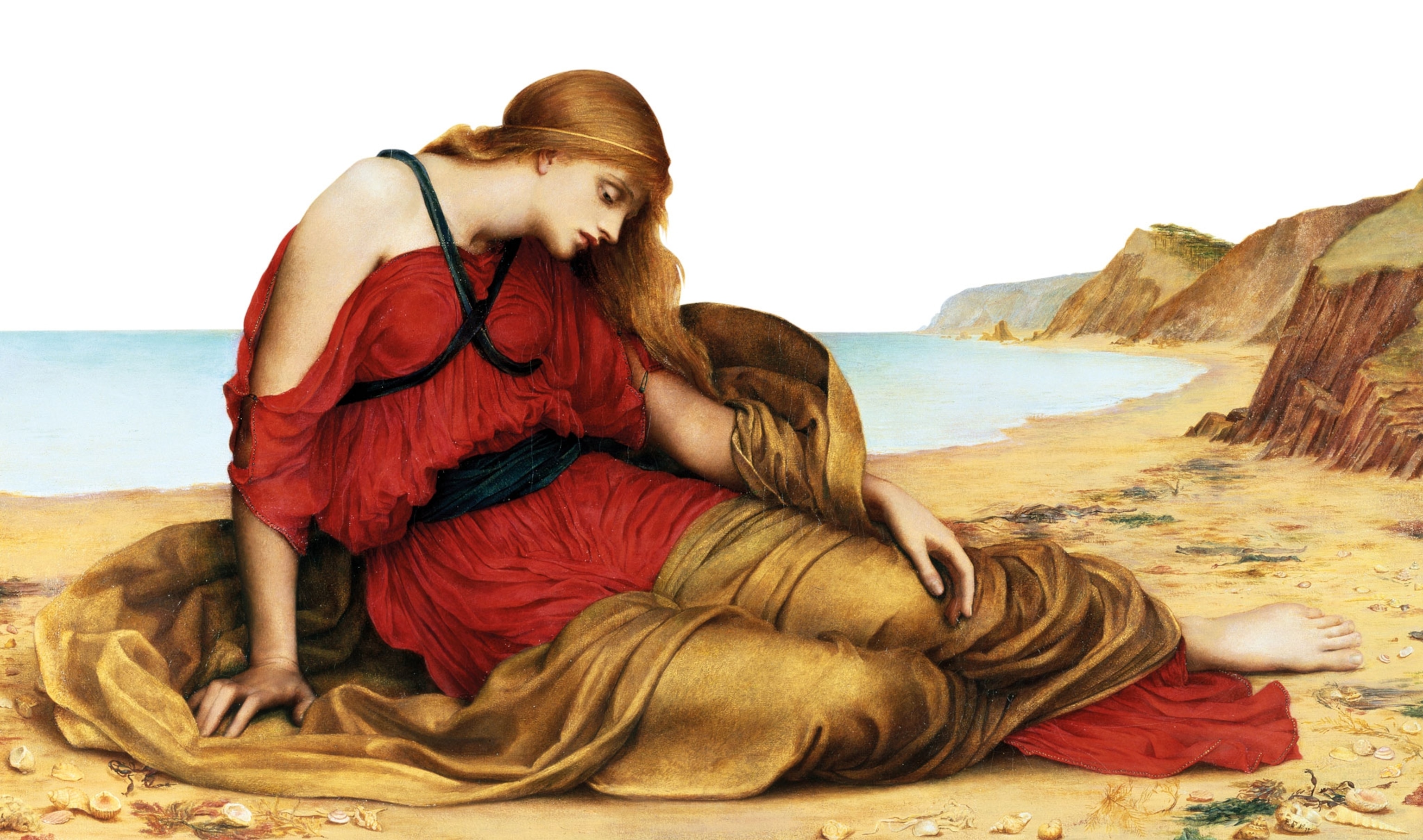
The princess Ariadne helps Theseus defeat the Minotaur, but he abandongs her on the island of Naxos during the voyage back to Athens. In some versions of the story, the wine god Dionysus commands Theseus to leave her there, so that he can marry her, but in others Theseus discards Ariadne to marry her sister Phaedra. Ariadne’s fate is similar to other female characters who love heroes in Greek and Roman stories. In Euripides’ play Medea, the titular queen is betrayed by Jason, the man for whom she betrays her family to help him win the golden fleece. Dido, in Virgil’s Aeneid, likewise helps the hero Aeneas, who nevertheless sets sail without her.
Another theory is that the design of the mythical Labyrinth grew out of a structure that was not a maze at all, but a dance floor. Homer describes such a floor in The Iliad, on which the aristocratic youth of Crete cavorted, designed by Daedalus, the same genius who designed the Labyrinth in the myth. Perhaps, it is speculated, the mosaic evolved into the sinister maze.
Myth and reality
To the Greeks of the sixth and fifth centuries B.C., Crete would have seemed a distant memory of an ancient power that was once respected, admired, and feared. It was also one that their ancestors had overcome, and the story of the Minotaur reflects that cultural belief. In the classical era, Theseus of Athens was their local hero, a prince who brought glory to Athens through his many adventures. Theseus was embraced by Athenians as a symbol of their city.
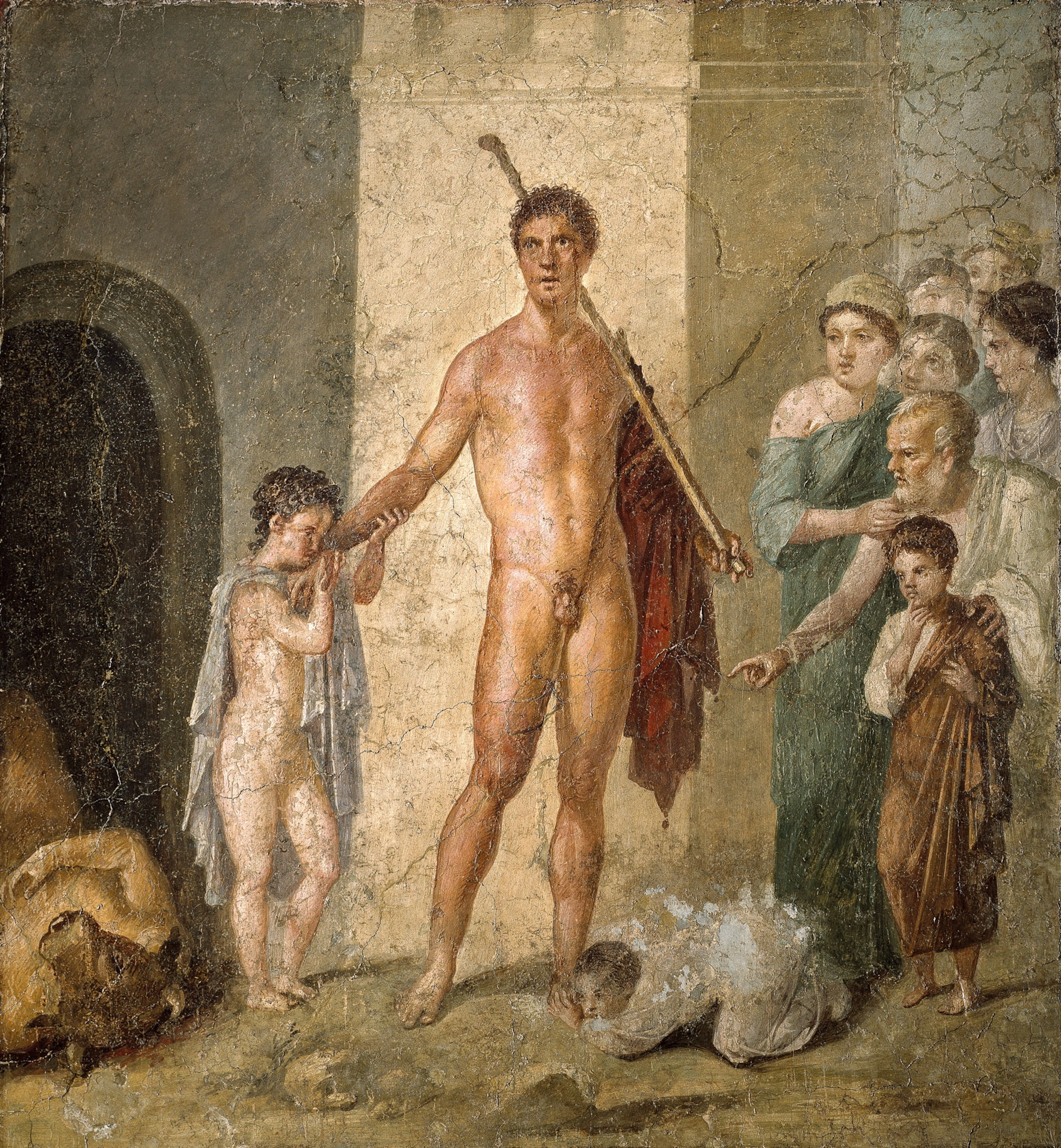
At this same time, Athens’s main rival was Persia. Defeat of the Persian navy at Salamis in 480 B.C. ushered in a period of military and commercial expansion for Athens. During this period, representations of Theseus and the Minotaur on pottery spiked considerably.
Some scholars believe that artists used the Minotaur as a symbol for a foreign enemy: Crete was the foe in the old world—as Persia was in the current one. Theseus represents the glory of Athens as he subdues the monster to free his home from the dominion of Crete.

